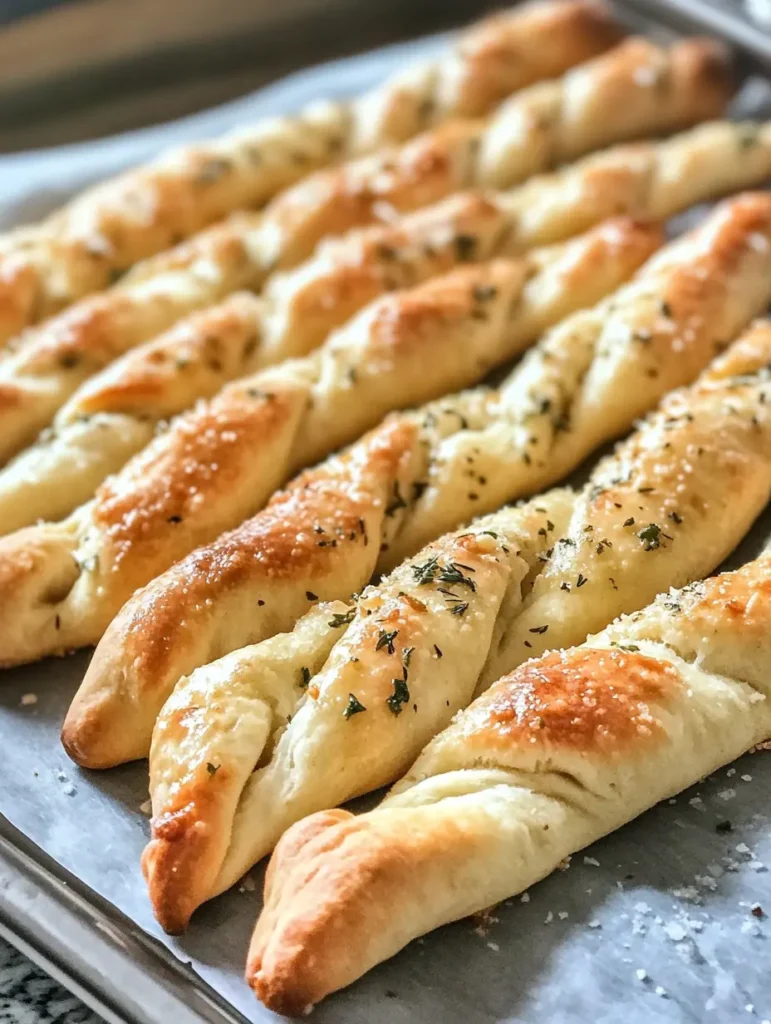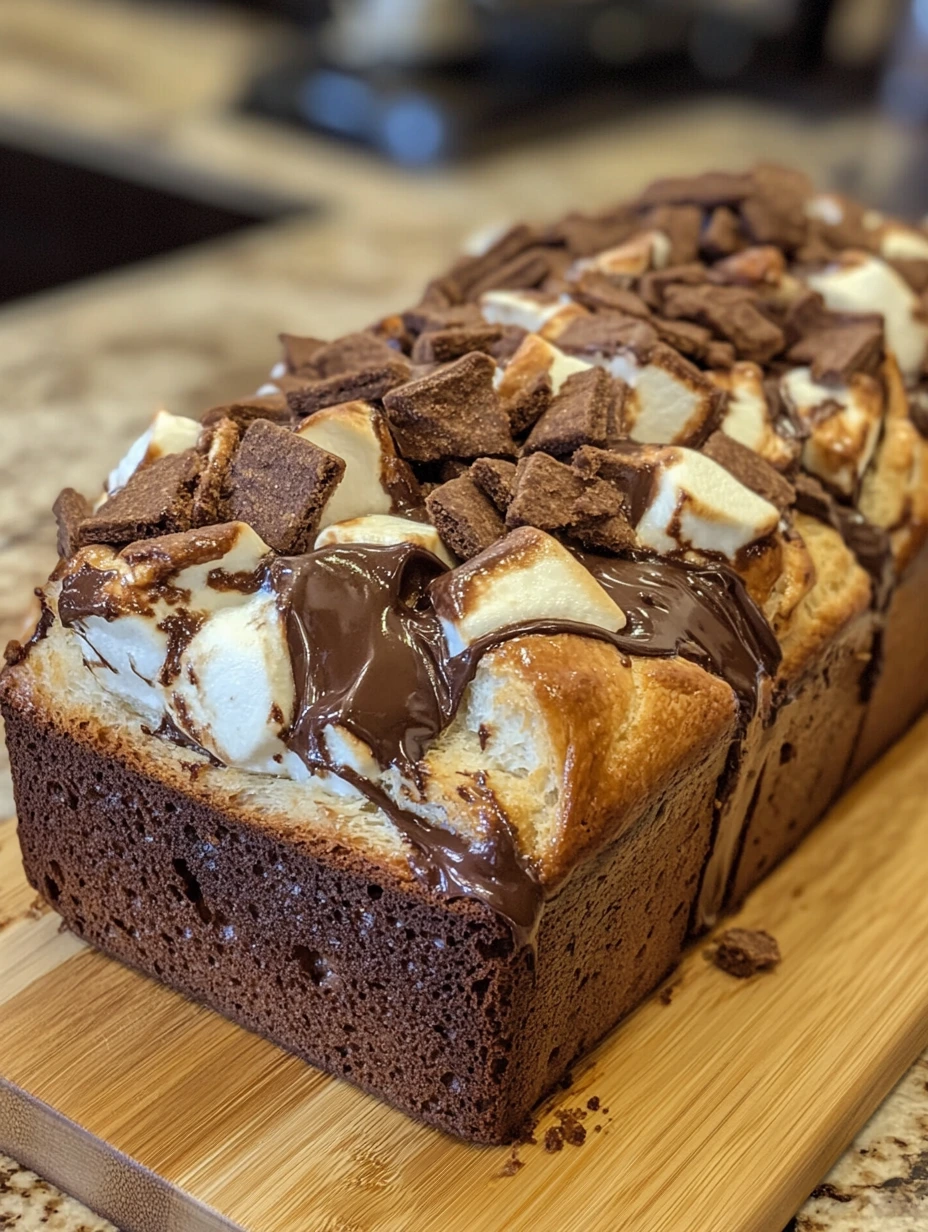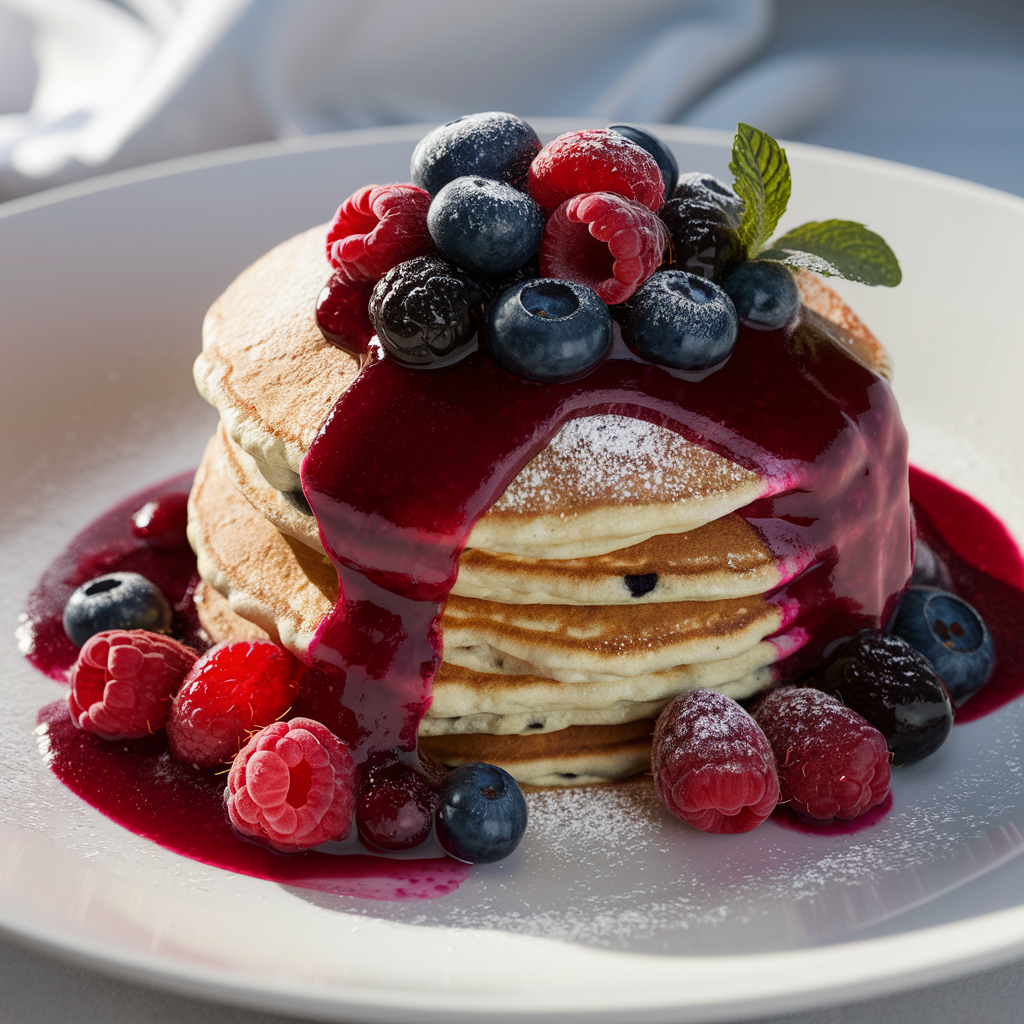If your sourdough journey has left you with jars of discard and you’re craving a crunchy, savory snack, these sourdough discard breadsticks are your new go-to. In this article, we’ll explore how to turn sourdough waste into golden breadstick perfection. You’ll learn why discard is a powerful secret ingredient, how to bake breadsticks with a beautifully chewy bite, and ways to flavor them for every palate. Plus, we’ll answer your most-asked questions like whether discard is gut-healthy and how to tell if it’s gone bad. Ready to make something simple, tasty, and waste-free? Let’s bake some joy.
Table of Contents

Sourdough Discard Breadsticks | Crispy, Chewy & Packed with Flavor
- Total Time: 30 minutes
- Yield: 16 breadsticks 1x
- Diet: Vegetarian
Description
Crispy, chewy, and wildly flavorful, these sourdough discard breadsticks are the perfect way to turn leftovers into a snack everyone loves.
Ingredients
1 cup sourdough discard (unfed, room temp)
1 cup all-purpose flour (plus more for dusting)
2 tbsp olive oil
1/2 tsp fine sea salt
Optional: herbs, parmesan, garlic, or everything bagel seasoning
Instructions
1. In a mixing bowl, combine the sourdough discard, flour, olive oil, and salt until a soft dough forms.
2. Let the dough rest for 10–15 minutes to relax the gluten.
3. Preheat oven to 375°F (190°C). Line a baking sheet with parchment paper.
4. Divide dough into small portions and roll each into thin ropes or flat strips.
5. Add toppings like herbs or cheese, and arrange on the baking sheet.
6. Bake for 18–20 minutes until golden brown and crisp on the edges.
7. Cool slightly before serving. Store leftovers in an airtight container.
Notes
Add your favorite toppings like sesame seeds, rosemary, or grated cheese for extra flavor.
You can freeze the unbaked dough for up to 2 months.
For a sweet twist, brush with butter and sprinkle with cinnamon sugar before baking.
- Prep Time: 10 minutes
- Cook Time: 20 minutes
- Category: Snacks
- Method: Baking
- Cuisine: American
Nutrition
- Serving Size: 2 breadsticks
- Calories: 92
- Sugar: 0.4g
- Sodium: 148mg
- Fat: 3.5g
- Saturated Fat: 0.5g
- Unsaturated Fat: 2.8g
- Trans Fat: 0g
- Carbohydrates: 13g
- Fiber: 0.6g
- Protein: 2g
- Cholesterol: 0mg
Keywords: sourdough discard breadsticks, sourdough snacks, discard recipes
Turning Waste Into Wonder –Why I Love These Sourdough Discard Breadsticks
A sourdough story from my kitchen window
The first time I made sourdough discard breadsticks, I was standing in my kitchen, eyeing a bowl of discard with guilt. It was chilly in West Lafayette, and soup was bubbling on the stove. I wanted something crunchy, salty, and easy. I remembered my mom’s holiday breadsticks how we’d sneak them hot off the tray before dinner. So, I mixed flour, discard, olive oil, and salt, rolled the dough thin, and sprinkled it with herbs. The house filled with the smell of roasted garlic and baked dough. The first bite? Crisp outside, chewy inside, just tangy enough. They were gone before the soup was ladled.
Now, every week, I make a batch and riff on the flavors sometimes parmesan and rosemary, sometimes everything bagel spice. Using sourdough discard for breadsticks not only saves waste but adds a depth of flavor no yeast dough can match. It’s a little ritual that brings warmth to ordinary afternoons.
If you’ve ever wondered, “Can sourdough discard be used for bread?” these breadsticks are the crunchy, golden proof that yes, it absolutely can. They’re a practical way to use discard, and so much tastier than tossing it out.

Why sourdough discard is the secret to better breadsticks
Sourdough discard adds more than tang it gives your breadsticks structure, character, and a gentle chew you can’t replicate with plain dough. Unlike instant yeast, which rises fast but lacks nuance, sourdough discard slowly ferments and enhances flavor. That little bit of acidity improves the texture and helps develop those golden, crunchy edges during baking.
Discard breadsticks are also incredibly forgiving. Whether your discard is thick or runny, fresh or a few days old, it can work. Just adjust the flour to get a pliable dough. For example, I used a thick whole wheat starter in my sourdough garlic knots and the dough was firmer perfect for twisting.
And the best part? You don’t need to wait hours for rise time. These breadsticks are ready in under 45 minutes from start to finish just like these quick cheesy breadsticks. They’re the perfect fix when you want a homemade snack without the fuss.
From soup-side dippers to snack platter stars, sourdough discard breadsticks earn their keep with every crisp bite. Up next: let’s dive into the simple process and smart variations that make this recipe endlessly useful.
Easy Steps, Endless Twists – How to Make Sourdough Discard Breadsticks
The simple base recipe you’ll use again and again
Making sourdough discard breadsticks is straightforward, and you don’t need fancy tools just a bowl, a rolling pin, and a baking sheet. The base dough includes sourdough discard, flour, olive oil, and salt. You mix, knead briefly, rest it (if you have time), then roll and bake.
Here’s the typical ratio I use:
- 1 cup sourdough discard (unfed, room temp)
- 1 cup all-purpose flour (plus a little more for dusting)
- 2 tablespoons olive oil
- ½ teaspoon fine sea salt
Mix everything until you get a soft, slightly tacky dough. Let it rest 10–15 minutes to relax the gluten this makes rolling easier. Then divide the dough, roll into long ropes or flat strips, season as desired, and bake at 375°F for about 18–20 minutes, or until golden and crisp on the edges.
This method is wonderfully adaptable. For example, when I wanted to dress them up for a weekend cheese board, I brushed them with garlic butter and grated fresh parmesan over the top very similar to my garlic parmesan knots. If I’m serving them with soup, I’ll go for cracked pepper and sea salt. And for the kids? Cinnamon sugar on a butter base does the trick, like in these cinnamon sugar knots.
Flavor variations that work with every meal
These breadsticks are more than a snack they’re a canvas. Once you master the base, try these creative takes to match any meal:
For Italian Night: Add dried oregano, basil, and shredded mozzarella. Serve with marinara.
Spicy Twist: Sprinkle chili flakes and smoked paprika into the dough or on top.
Cheesy Delight: Mix in shredded cheddar or parmesan for cheesy sticks with crisp edges, like I do in my cheesy garlic pull-apart bread.
Sweet & Savory: Brush with honey-butter and top with sea salt fantastic with soft cheeses or jam.
Everything Bagel Style: Before baking, brush with egg wash and coat with everything seasoning.
You can also shape them to match the moment twisted for a rustic look, braided for brunch, or even rolled flat and cut into crackers, like in my sourdough discard crackers. Keep extras in an airtight jar for up to a week though they rarely last that long in my kitchen.
And if you’re wondering “Is sourdough discard still gut healthy?”, the answer is yes. While it’s not as probiotic-rich as a fully fermented loaf, discard still carries beneficial acids and prebiotics especially when baked simply like these.
Avoiding the Flops – Common Mistakes with Sourdough Discard Breadsticks
The biggest sourdough starter mistake? Ignoring your discard
Let’s be honest every sourdough baker has faced discard guilt. And one of the biggest mistakes with a sourdough starter isn’t underfeeding it…it’s not using the discard. People often pour it down the sink or forget it in the fridge, assuming it’s not good for anything. But that tangy, flour-rich mix is packed with flavor and potential. These breadsticks prove it.
When I started baking with discard regularly, it changed my whole starter routine. I went from dreading the waste to looking forward to it. Every time I stir down a bubbly jar, I ask, “What snack do I want today?” Sometimes it’s a twisty jalapeño popper bread bowl; other times it’s a batch of ultra-crisp breadsticks.
Ignoring your discard limits your creativity. It’s an ingredient treat it like one. And once you taste how savory, chewy, and satisfying these breadsticks are, you’ll never skip a bake day again.
How to know when your discard has gone bad
Let’s talk safety. One of the most asked questions is, “When has sourdough discard gone bad?” It’s a smart one and easy to answer if you trust your senses.
Here’s what to look for:
| Sign | Meaning |
|---|---|
| Gray liquid (hooch) | Normal; stir it back in or pour off |
| Strong alcohol smell | Still usable; feed soon |
| Pink/orange streaks | Toss it this is bacterial growth |
| Fuzzy mold on surface | Discard immediately |
If it smells like acetone or something truly off, don’t risk it. Start fresh. But in most cases, refrigerated discard can last 1–2 weeks safely. I keep mine in a jar labeled with the date, so I always know how old it is. When I bake breadsticks, I usually pull discard that’s about 5 days old it’s extra tangy and perfect for bold flavors like garlic or cheese.
A bonus tip: if your discard is super thin or watery, add a bit more flour when mixing the dough. You want something pliable but not sticky. The dough should roll out smoothly and hold its shape when twisted or cut.
Recipes like my sourdough pretzels also work beautifully with this same principle using up older discard and adding just enough structure to make something golden and crave-worthy.
Making It a Moment – Serving, Storing, and Sharing Sourdough Discard Breadsticks
From soup sidekick to showstopper
There’s something quietly impressive about a humble breadstick, especially when it’s homemade and full of tangy sourdough flavor. Whether you’re dipping it into tomato soup, plating it beside a cheese board, or packing it in a lunchbox, these sourdough discard breadsticks adapt beautifully.
I love serving them warm, just out of the oven, with a swirl of herbed butter or olive oil infused with garlic and chili. When I have guests, I stand a bundle of them in a mason jar, tied with twine, next to a ramekin of whipped feta or hummus. They disappear fast especially the parmesan-topped ones, inspired by my garlic pull-apart bread.
They’re also a perfect side for cozy dinners like my slow-cooked beef stew or even something fresh and bright like creamy tomato basil soup. And when you flavor them with cinnamon sugar or lemon zest? They make an unexpected and delightful brunch bite.
Smart ways to store and gift your breadsticks
If you want to keep your breadsticks fresh and crisp, let them cool completely and store them in an airtight container. They’ll stay good for up to a week at room temperature. I often double the batch and stash some in the pantry for impromptu snacks or lunch sides.
You can also freeze unbaked dough logs just wrap tightly and thaw before rolling and baking. It’s a trick I use often during busy weeks or when I’m prepping ahead for gatherings.
One of my favorite ways to share these breadsticks is as part of a homemade food gift. Wrap a dozen in parchment, tuck them into a paper bag with a tag that says “Fresh from the kitchen,” and you’ve got a cozy gift that feels personal and nourishing. For holiday gifts, I pair them with a jar of infused olive oil and a handwritten card with the recipe.
And remember every batch is a new opportunity to experiment. Try folding in herbs, cheeses, seeds, or spices. Let your discard reflect your mood and your pantry. It’s amazing how something so simple can spark so much joy, both in the making and the giving.
FAQS
Can sourdough discard be used for bread?
Absolutely. Sourdough discard is full of wild yeast and flavor. While it won’t rise on its own without added leavening, it’s perfect for flatbreads, quick breads, crackers, and breadsticks. These breadsticks are a great example crisp, chewy, and easy.
What is the biggest mistake you can make with your sourdough starter?
Neglecting your discard is one of the biggest missed opportunities. It’s still active, flavorful, and incredibly versatile. Discard doesn’t mean useless it just means unfed.
Is sourdough discard still gut healthy?
Yes, to a degree. While discard isn’t as probiotic as fully fermented sourdough, it still contains organic acids and prebiotics that support digestion. And when baked simply like in breadsticks it retains those benefits without being overly processed
When has sourdough discard gone bad?
If you see mold, pink/orange streaks, or smell something truly rotten (not just tangy), toss it. Gray liquid (hooch) or a sharp smell is usually normal. Keep discard in the fridge and use it within 1–2 weeks for best results.
Conclusion
Sourdough discard breadsticks are the delicious answer to what you thought was waste. They’re easy, quick, and packed with that sourdough magic chewy, crisp, and wildly customizable. From garlic-parmesan twists to sweet brunch bites, they’re a kitchen staple you’ll keep coming back to. So next time you feed your starter, don’t toss that jar of discard. Bake it into something unforgettable.more recipes follow me: facebook – Pinterest
Let’s keep baking the trail together.





